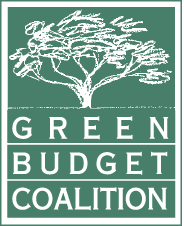Governments across Canada are starting to show leadership in making sure homes are affordable, healthy, safe and resilient to extreme weather. However, addressing our twin housing and climate crises will require significant investments in upgrading homes and buildings.
Total Recommended Investment:
$12.44 billion over five years (detailed breakdown can be found below)
In light of rising energy costs and a housing affordability crisis, retrofit programs have emerged as a critical emissions reduction and climate adaptation solution. Retrofits also contribute to a more equitable and sustainable energy landscape while fostering long-term resilience for vulnerable populations.
Financial and regulatory support for new home construction is advancing rapidly, but we must remember that affordable housing isn’t affordable unless it’s affordable to heat and cool, and is energy-efficient and climate-safe. As we collectively work to increase housing supply across all regions of the country, we must ensure that these new homes are resilient to climate change and do not add to future retrofit and upgrade burdens.
Budget 2024 highlighted the important role that all levels of government play in ensuring all Canadians have access to housing. To ensure all homes have safe levels of indoor air quality, protect occupants from the impacts of climate change, and are able to reduce energy use, costs and emissions, we must:
- Commit to a plan and process to phase out the on-site combustion of fossil fuels and ensure homes are connected to reliable, clean electricity;
- Establish the regulations and policy tools required to advance large capital investments in upgrading building envelope and ventilation systems while establishing a market for high-performance buildings; and
- Recognize that climate-safe housing is a human right and accommodate the unique needs of Indigenous communities.
Over the past few years the critical strategic building blocks have been put in place with the National Adaptation Strategy, the National Housing Strategy, and the Canada Green Building Strategy, which are critically linked to the national climate and energy plans. These strategies require cross-departmental alignment and designated accountability. Also required are targeted regulations and capital funding to stimulate labour and industry growth and retrofit market demand while addressing the needs of Canadians facing the impacts of climate change, as well as those living with high energy burdens.
The Canada Greener Homes Affordability Program takes the right step in partnering with provinces to deliver energy efficiency retrofits to low- and medium-income households. However, the program budget and scope was dramatically reduced and is not sufficient to continue supporting medium and low-income families in upgrading their homes. The recently launched Deep Retrofit Accelerator Initiative offers an opportunity to leverage and enhance funding through locally-focused concierge and market accelerator programs.
Background:
- The total public investment needed to stimulate decarbonization and climate- proofing of Canada’s existing building stock has been estimated at $10- 15 billion per year for ten years, covering 50-75% of the incremental cost of the required upgrades (above normal replacement costs).
- The Indigenous Clean Energy (ICE) Indigenous Housing Energy Efficiency Data Set estimates 209,000 homes in Indigenous communities across Canada require energy efficiency upgrades. Combined with the need for about 72,000 new climate resilient homes, it represents an investment of $7.4 billion.
- Migrant farmworkers are exposed to extreme heat both in their workplaces and often in their on-farm housing, creating serious cumulative health risks. The federal government requires that the housing provided to migrant farm workers be clean and adequate, yet according to the Employment and Social Development Canada’s “What we Heard” survey of migrant worker housing, approximately 43% of on-farm homes for workers are not mechanically cooled.
Detailed Recommended Investments:
To begin ramping up to the full investment level needed, the Green Budget Coalition recommends that the 2025 federal budget allocate $12.44 billion over five years, including:
- $7 billion over five years for no-cost home efficiency retrofits and heating electrification for low-income households experiencing energy poverty, with assurances to include and protect renters. Within this funding stream, special attention should be paid to rental buildings, non-market and social housing. Funding should also address climate adaptation measures to make these homes healthier, safer and more resilient. [NRCan, CMHC, HC, HICC]
- $3.8 billion over five years for deep retrofits and energy efficiency investments for housing in Indigenous communities, as identified by Indigenous Clean Energy. [ISC, CMHC, CIB, HICC]
- $10 million over five years for targeted retrofit funding to make on- farm homes provided for migrant workers more efficient, safe and include mechanical cooling. [CMHC, CIB, ESDC]
- $1.5 billion over five years for skill development, capacity building and recruitment, with funds earmarked to increase equity and diversity in the retrofit economy. [NRCan, ISED, HC]
- $125 million for last-mile capital investment in 15-20 transformative deep retrofit demonstration projects identified by the teams participating in the Deep Retrofit Accelerator Initiative. [NRCan]
- $5 million for the development of a National Affordable Home Energy Strategy with clear actions and outcomes to address energy affordability in Canada. This national strategy should be developed with a focus on energy poverty, with the input of a new advisory group. It should fill gaps in federal policy on energy poverty that remain after the publication of the National Adaptation Strategy and Canadian Green Building Strategy. [NRCan, HICC]
